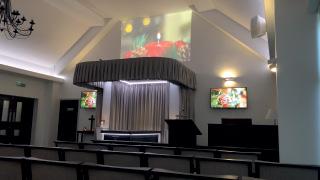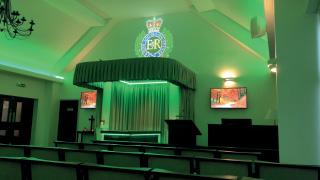
3 minute read
Funeral diversity
The end of life service, or funeral has rapidly changed during the course of this century, with many modernisms being introduced to end of life services.
As we head through now the twentieth year of the 21st century more and more sophisticated technologies have been installed, mainly in the private sector. What has become clear is that the general public has grasped these options and they are quickly being both accepted as part of an end of life service option, more importantly being embraced and found to be of much comfort.
Advertisement
There is little doubt that the end of life services across every culture has altered dramatically. Those who have been on the frontline in our industry for any length of time can clearly see that, which makes it all the more staggering that a government body may well actually legislate against what people at the most difficult time of their lives, actually want.
At the CBCE in Newcastle two years ago, following a survey of over 5000 families who had experienced the loss of a loved one, over 90% of those interviewed clearly stated that the most upsetting feature of a crematorium service was the feeling of being rushed or crowded out by either the family prior or the next service being squeezed in behind their own. Yet it seems with those facts very clear the CMA feel that 45 minutes, if imposed is more than adequate?
Memoria were the first facilitator to introduce a minimum one-hour service time, this was very quickly applauded and subsequently families, funeral directors and celebrants have been able to experience a service that is both befitting and comforting at such a difficult time. Plasma screens where you see pictures of a loved one’s life whilst listening to the music that was important to them, became the norm. The option to stream across the world to those unable to attend a service has been hugely successful as we strive to provide

an option that facilitates families with relations across both the country and the world.
More recently, we have introduced a very sophisticated chapel lighting option where you can choose if you so wish, the colour of lighting that is special to your loved one and family, at the point of committal, as well as being able to project a special image over the catafalque. In less than 12 months over 40% of families have taken up this option, proof if ever it was needed that we live in rapidly changing times, where peoples' attitudes to death have changed and their needs much altered.
The introduction and success of Death café’s has been remarkable, people now talk openly and share their experiences of loss. Churches and religious organisations, now seeing people’s needs have altered are listening to their congregations and their needs. The public are increasingly choosing colour or colours, you see old fashioned buses, motor-cycle hearses, bicycle hearses, dove releases, dancers and piping or flute bands marching into the grounds.
These and many other modernisms which continue to grow in number are very clear and living examples of what families want when celebrating the life of their loved one. All of these wonderful options take time and investment, they are here and available and people are asking for them.
Let’s hope that by the time any government body tries to enforce change that they have properly understood peoples' needs, like those who actually provide these amazing services.
Frank Meilack – Director of Community Engagement, Memoria Ltd









